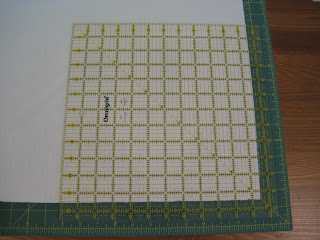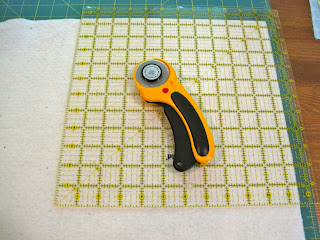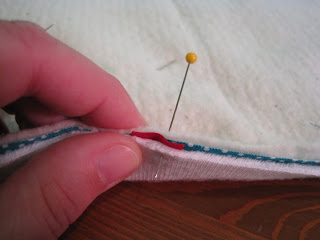I've had such a great time designing and making bibs for pregnant friends and family members. This week, however, it was time to turn the attention to our little sweetie.
Here are her bibs:
31 May 2012
28 May 2012
Weekend in Photos
It was a holiday weekend (Memorial Day) so with the long weekend comes a long photo recap of our 3-day weekend.
 |
| Every Saturday morning needs fresh snickerdoodles with white chocolate chips. |
 |
| When the recipe calls for one red Thai chili, you probably shouldn't double it. (Thai Pineapple Fried Rice) |
 |
| It's good to know that we can get a little piece of Hong Kong in Bellevue at Din Tai Fung. |
 |
| We met up with friends and their two little boys at Chateau Ste. Michelle's Stay Cation car show. |
 |
| Our 2011 Christmas tree is finally going to meet its maker next weekend. I can't believe how just moving it from one place to another in the garage stirred up such awesome sappy scents. |
 |
| Baby girl can measure her growth against a kiwi, a pukeko, and various moa. However, she's never really going to grow up, right? |
 |
| This paper is not going to be used for wrapping or scrapbooking. Any guesses? |
 |
| Most organized girl on the block... |
 |
| George made banana, mango, serrano chili sorbet. Yum! |
 |
| Looks like the baby webcam works on our TV. |
 |
| Baby girl has been blessed with so many books that her daddy had to install four more shelves. |
 |
| George (successfully) tried his hand at drywalling this weekend. |
 |
| Tomorrow morning's projects are all ready for me and my machine. |
I must share with you two real conversations from our house this weekend:
Him: What are you doing?
Me: Contemplating.
Him: Contemplating what?
Me: How frighteningly close to completion this nursery is.
Him: Uh oh.
Me: What?
Him (surveying the crib, carseat, and stroller): It looks like we're going to have a baby soon.
Are we soon-to-be first time parents or what? We're both so excited to meet our little girl, yet not entirely sure we're prepared for parenthood and the major life alterations that are just around the corner. Can one ever truly be ready?
25 May 2012
Feely Blanket Tutorial
This project has been affectionately known as "feely blanket" on my to-do list, though plenty of people refer to the same thing as a tag blanket. This is my favorite type of project because I had an idea, poked around the Internet to get some tips on how others have made similar projects, and then I made it up as I went along. Without further ado, here's the tutorial:
You'll need...
Fabric for blanket top (scraps work great; quantity depends on desired size)
Fleece for backing (quantity depends on desired size)
Quilting batting (quantity depends on desired size)
Ribbon (about 40 inches worth, though exact quantity depends on your preference)
Thread (matching or contrasting, depending on your preference)
Sewing Machine
Pins
Instrument of measuring
Instrument of cutting
I think it's a good idea to pre-wash your blanket top and backing fabrics, but I suppose it's a personal preference.
To start making your blanket, you need to make your blanket top. This could be a solid piece of fabric, some quilting pattern, patchwork of whatever sized squares you want to use, or whatever suits your fancy. I made mine out of four 6-inch squares.
 |
| Lay out your arrangement. |
 |
| Match up your center seams and pin together face-to-face. Sew the top row to the bottom row using a 1/4-inch seam. Press your new seam toward the row with the darker fabrics. |
Next, you'll measure your blanket top, cut the rest of your materials, and plan out your blanket.
If you started with 6-inch blocks and kept a 1/4-inch seam, your blanket top should be 11.5 inches square. It's not a big deal if it measures differently, but you will want to know the dimensions.
 |
| Measure your blanket top. If your edges are uneven, you'll want to trim them so that each side is straight. |
 |
| Remove any the salvage from your backing fabric. |
 |
| Cut your backing fabric to the same dimensions as your finished blanket top. |
 |
| Cut your batting to the same dimensions as your finished blanket top. |
 |
| Lay down your batting, and place your blanket top face-up on the batting. Plan where you want your ribbons to be placed, very approximately. |
 |
| No need to fully pin it... |
It's time to finalize the location of the ribbons and truly pin them into place.
 |
| Sandwich the ribbon in place between the blanket top and backing. Then, pin... |
 |
| ...in place. |
 |
| Repeat this process with all of your ribbons. Make sure that your layers are pretty flat. |
 |
| Pin or otherwise mark a section of the edge where you will not sew. This will allow you to turn the blanket right-side-out. I left about four inches. |
Now, it's time to sew. I've done it both ways, and I think it's best to sew with the fleece down and batting on top. The fabrics tend to shift a bit either way, but I got better results with the fleece down.
I used a pretty small stitch so that the blanket is strong. Start sewing just outside of your marked opening, approximately 1/4 inch from the edge of the fabric. Do at least a few back stitches so that you don't rip your seam when you turn your blanket inside out.
 |
| Back stitch where you start and stop. |
 |
| It's also a good idea to back stitch at the corners for extra strength. |
Because the fabrics tend to shift (perhaps a walking foot would cure this), it's a good idea to regularly (at least a couple of times per side) check that you're sewing through all layers.
Each time you get close to sewing a ribbon, stop with the needle engaged in the fabric. Remove your pin and check that your ribbon is where you want it, as straight as you want it, and that the tails are in the position desired (together or separated). Hold the ribbon in place while you sew it. Back stitch several times so that the ribbon is ultra secure.
 |
| Sew each ribbon carefully following the steps above. |
Once you've sewn all the way around to your ending pin, double check that you've sewn through all layers all the way around. (This is a good time to heat up your iron.) Before you reach into your blanket for the big reveal, carefully remove the pins marking the opening and the ones holding the blanket top to the batting.
 |
| Turn your blanket right-side-out through the opening you left. You'll probably want to use chopsticks or a spoon or something to turn the corners into nice points. |
 |
| Done, except for the finishing touches. |
 |
| Where you left the opening, fold the fabrics inside to continue the nice seam. Iron and pin the opening. |
The finishing sewing is important for the stability of the blanket.
 |
| End each row with a back stitch or two about the same distance from the edge of the blanket as you started. |
 |
| Sew the next line in the opposite direction as the first one. |
 |
| If you use my half presser foot measurement, your return line can be easily measured along the edge of the presser foot. |
 |
| Take it slow on the corners to follow the natural curve of the fabric. |
And...you're done! Take a lint brush to your blanket and then admire it!
 |
Here are some others that I made for our (spoiled) little girl:
Subscribe to:
Posts (Atom)













